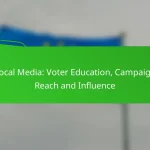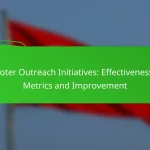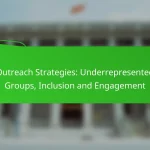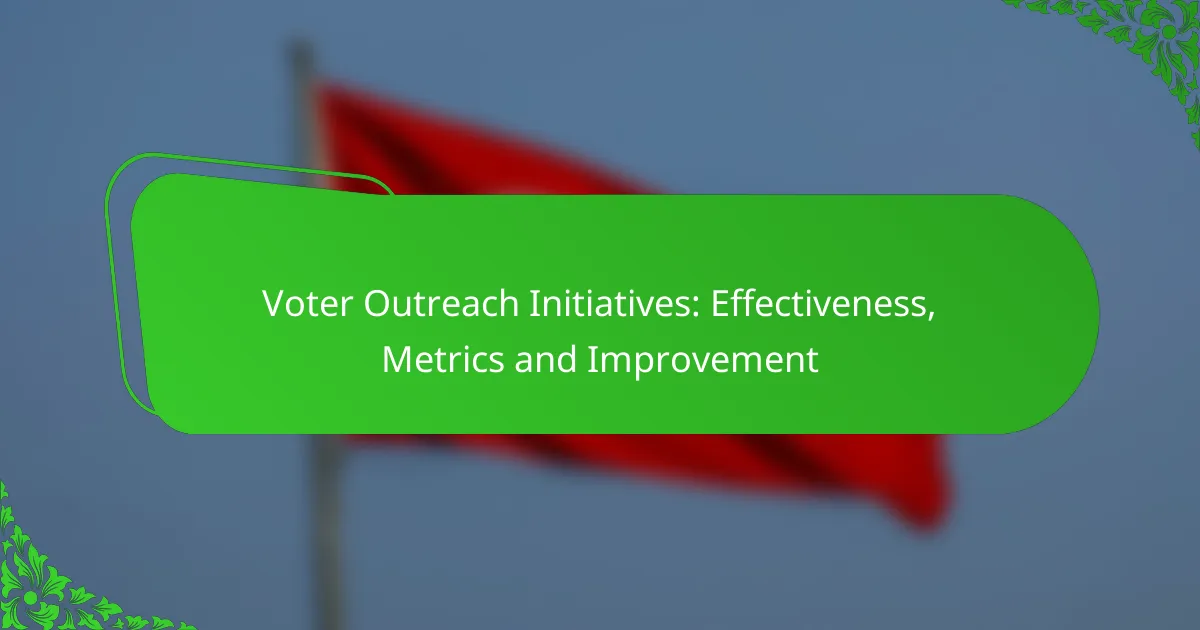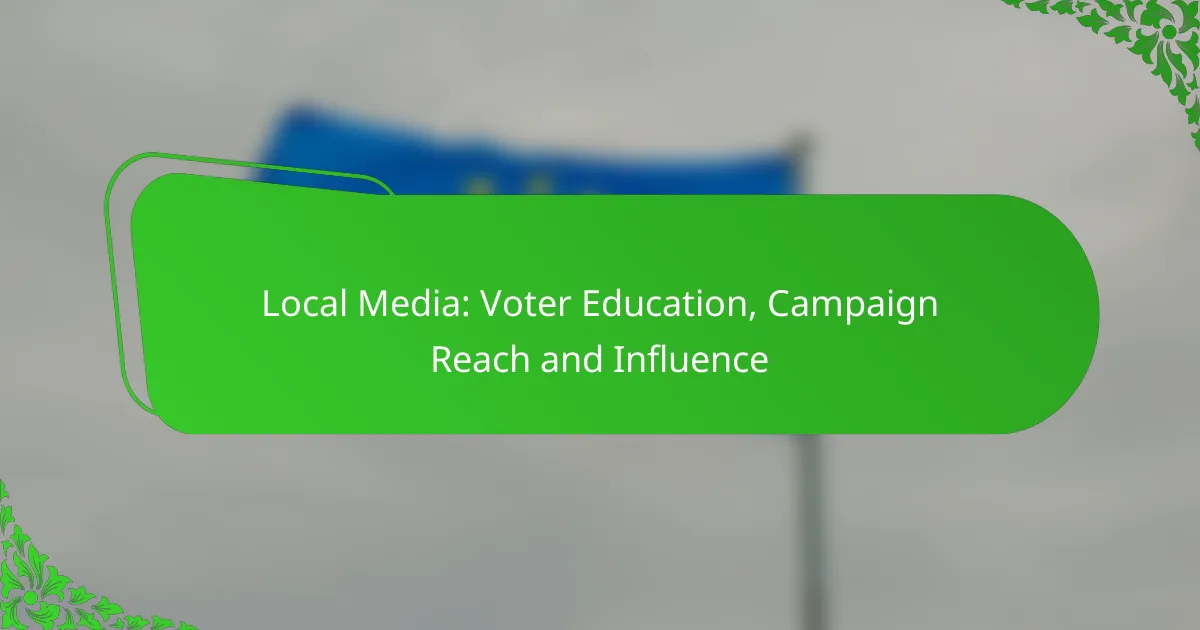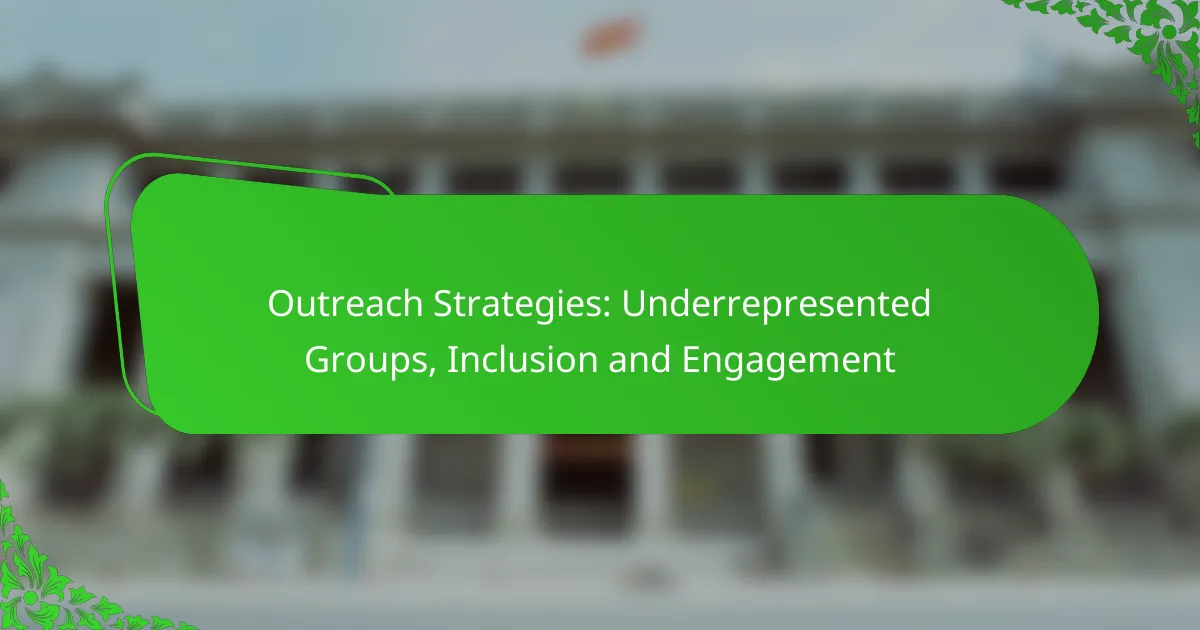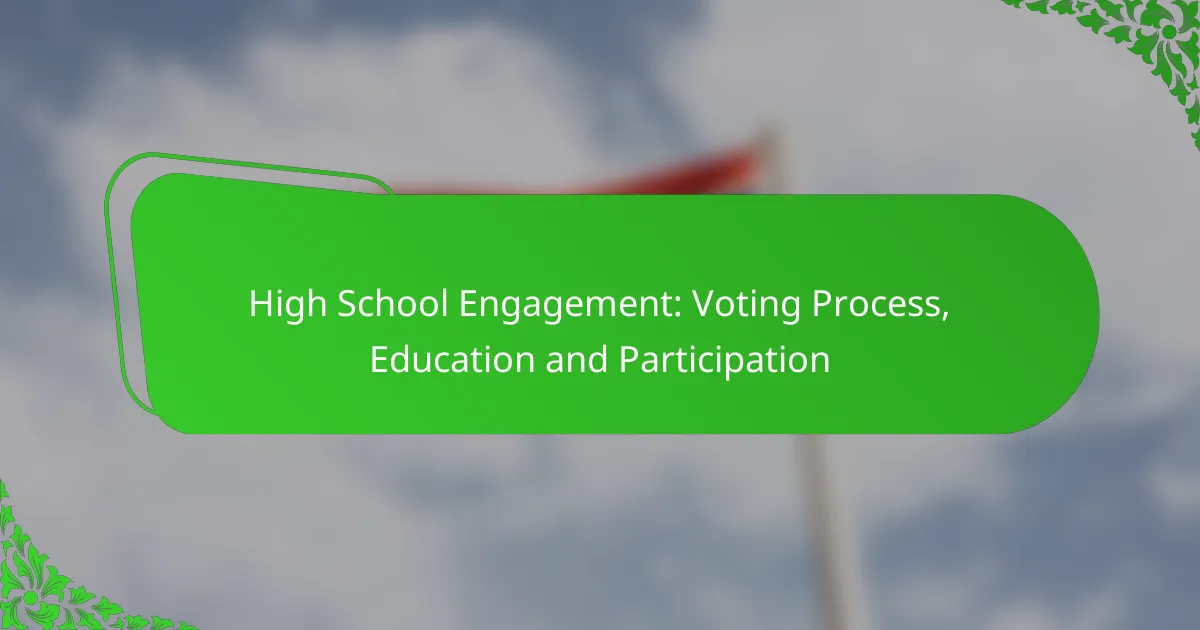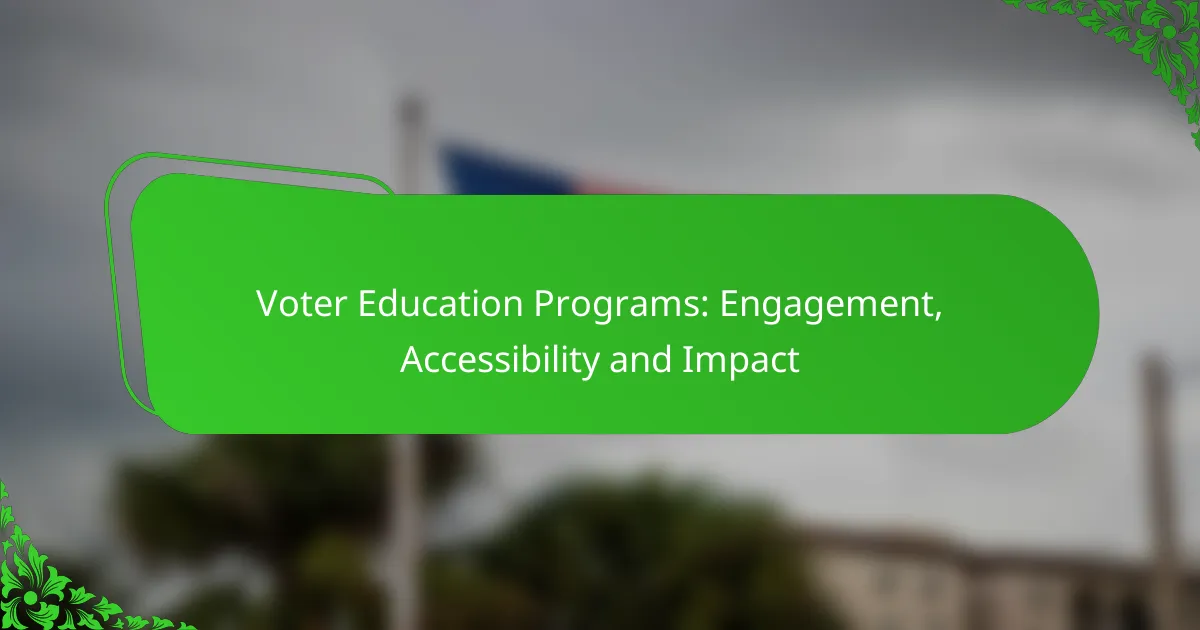Voter outreach initiatives play a crucial role in enhancing voter registration and participation in the United States. By employing a mix of personal interaction, technology, and community engagement, these initiatives aim to connect with potential voters and motivate them to exercise their rights. To assess their effectiveness, various metrics such as voter turnout rates and engagement feedback are analyzed, guiding improvements in outreach strategies.
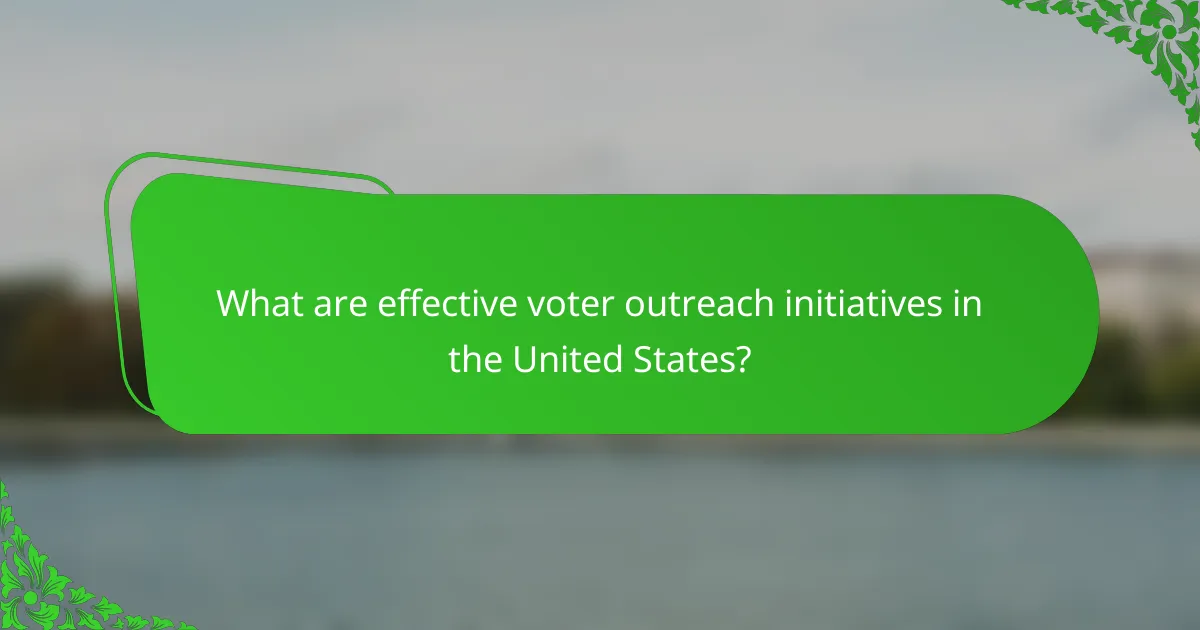
What are effective voter outreach initiatives in the United States?
Effective voter outreach initiatives in the United States include various strategies aimed at increasing voter registration and participation. These initiatives leverage personal interaction, technology, and community engagement to connect with potential voters and encourage them to exercise their rights.
Door-to-door canvassing
Door-to-door canvassing involves volunteers visiting homes to engage directly with residents about voting. This method allows for personalized conversations, where canvassers can answer questions, provide information on registration, and discuss candidates or issues.
To maximize effectiveness, canvassers should be well-trained and knowledgeable about local voting laws and candidates. Targeting neighborhoods with historically low turnout rates can yield significant improvements in voter participation.
Phone banking
Phone banking consists of volunteers making calls to potential voters to inform them about upcoming elections and encourage them to vote. This approach can reach a large number of individuals quickly and can be tailored to specific demographics.
Successful phone banking requires clear scripts and a friendly demeanor. It’s beneficial to focus on specific issues that resonate with the audience, and follow up with reminders as the election date approaches.
Social media campaigns
Social media campaigns utilize platforms like Facebook, Twitter, and Instagram to spread awareness about voting and engage younger audiences. These campaigns can include informative posts, videos, and interactive content to motivate users to register and vote.
To enhance impact, campaigns should use targeted ads to reach specific demographics and employ hashtags to increase visibility. Engaging content that encourages sharing can amplify reach and foster community discussions around voting.
Community events
Community events, such as town halls or voter registration drives, create opportunities for face-to-face interaction and education about the voting process. These gatherings can foster a sense of community and encourage participation in local elections.
Organizers should collaborate with local organizations to maximize attendance and impact. Providing incentives, such as food or entertainment, can also attract more participants and create a welcoming environment.
Text message outreach
Text message outreach involves sending SMS reminders and information to potential voters about registration deadlines and polling locations. This method is particularly effective due to the high open rates of text messages.
To implement this strategy, organizations should collect phone numbers through sign-ups at events or online. Messages should be concise and actionable, providing clear instructions on how to register or vote, while ensuring compliance with privacy regulations.
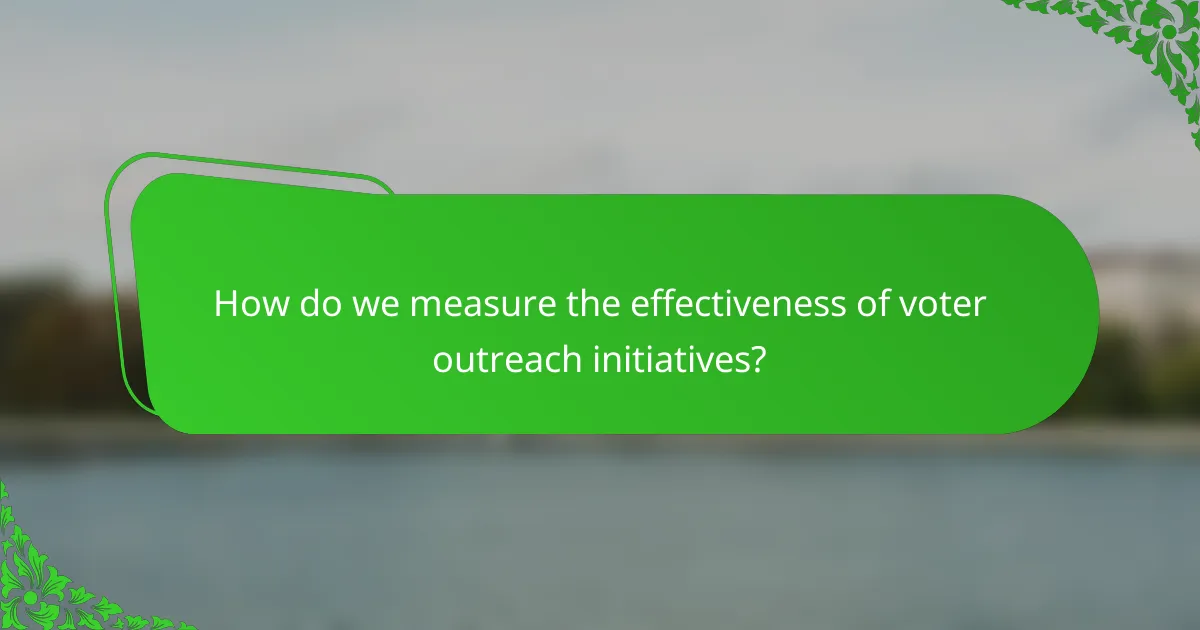
How do we measure the effectiveness of voter outreach initiatives?
Measuring the effectiveness of voter outreach initiatives involves analyzing various metrics that indicate how well these efforts engage and mobilize voters. Key metrics include voter turnout rates, engagement metrics, survey feedback, and cost per voter contacted, each providing insights into the success and efficiency of outreach strategies.
Voter turnout rates
Voter turnout rates are a primary indicator of the effectiveness of outreach initiatives. These rates reflect the percentage of eligible voters who participate in elections, and increases in turnout can often be attributed to successful outreach efforts. Tracking turnout across different demographics can help identify which groups are responding positively to specific initiatives.
For instance, if a campaign targets young voters and sees a significant increase in turnout among that demographic compared to previous elections, it suggests that the outreach was effective. Comparing turnout rates before and after implementing outreach strategies provides a clear measure of impact.
Engagement metrics
Engagement metrics encompass various actions taken by potential voters in response to outreach efforts, such as event attendance, social media interactions, and website visits. These metrics help gauge interest and involvement, which are critical for mobilizing voters. High engagement often correlates with increased likelihood of voting.
For example, tracking the number of attendees at voter registration drives or the number of shares on social media posts about upcoming elections can provide valuable insights. Regularly analyzing these metrics allows organizations to adjust their strategies to enhance engagement further.
Survey feedback
Survey feedback is essential for understanding the perceptions and motivations of voters regarding outreach initiatives. Conducting surveys before and after outreach campaigns can reveal how well the messages resonate and whether they effectively address voter concerns. This qualitative data can guide future outreach efforts.
Surveys can include questions about awareness of the election, perceived barriers to voting, and preferred methods of communication. Analyzing this feedback helps tailor outreach strategies to better meet the needs of specific voter groups.
Cost per voter contacted
Cost per voter contacted is a crucial metric for evaluating the efficiency of outreach initiatives. This figure represents the total expenditure on outreach divided by the number of voters successfully contacted. Understanding this cost helps organizations allocate resources effectively and optimize their outreach strategies.
For example, if a campaign spends $10,000 and contacts 2,000 voters, the cost per voter contacted is $5. Monitoring this metric over time can help identify the most cost-effective outreach methods, allowing for adjustments to maximize impact while minimizing expenses.
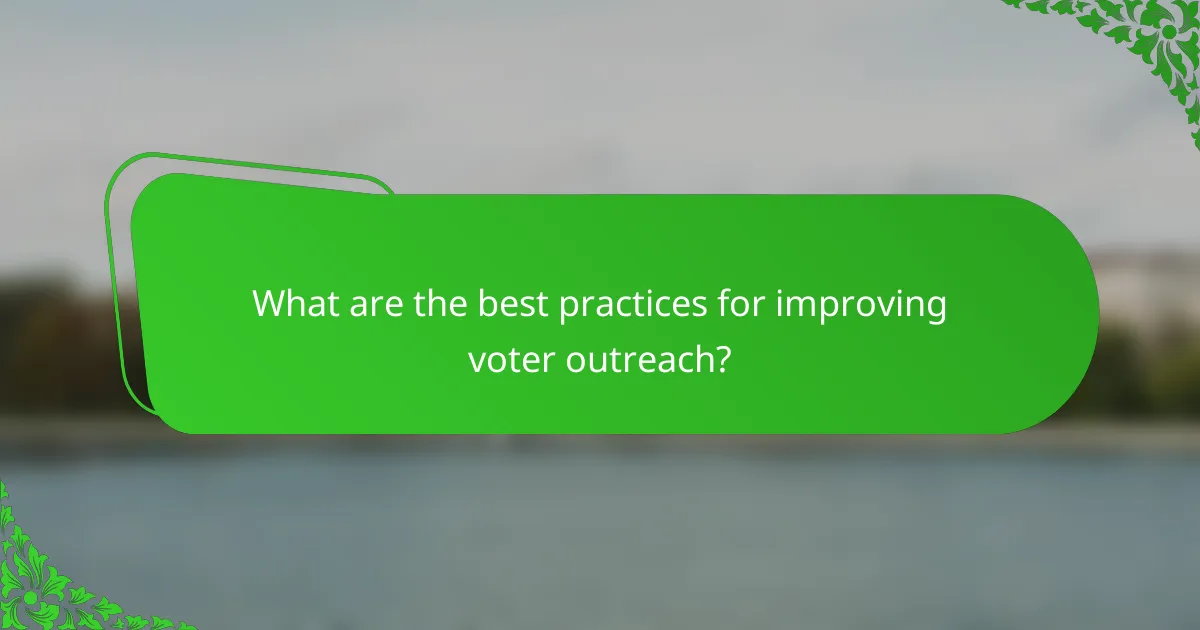
What are the best practices for improving voter outreach?
Improving voter outreach involves implementing strategies that effectively engage and inform potential voters. Best practices include targeted messaging, data-driven strategies, collaboration with local organizations, and utilizing technology to enhance communication efforts.
Targeted messaging
Targeted messaging focuses on crafting communication that resonates with specific demographics or communities. By understanding the unique concerns and interests of different voter groups, outreach efforts can be more impactful.
For instance, messages about healthcare may be more effective for older voters, while younger voters might respond better to issues like climate change. Tailoring content to these interests can significantly increase engagement.
Data-driven strategies
Data-driven strategies involve using analytics to inform outreach efforts. Collecting and analyzing voter data helps identify trends, preferences, and areas needing attention, allowing for more effective campaign planning.
Utilizing surveys and social media analytics can provide insights into voter sentiment. This information can guide the timing and content of outreach activities, ensuring they align with voter interests and behaviors.
Collaboration with local organizations
Collaborating with local organizations can enhance voter outreach by leveraging established trust and networks within communities. Partnering with nonprofits, civic groups, and local businesses can expand reach and credibility.
These organizations often have direct access to target demographics and can facilitate events or initiatives that encourage voter participation. Joint efforts can also pool resources for more effective campaigns.
Utilizing technology
Utilizing technology is essential for modern voter outreach. Digital platforms, such as social media, email campaigns, and mobile apps, can efficiently disseminate information and engage voters.
For example, using SMS reminders about registration deadlines or polling locations can significantly improve turnout rates. Additionally, online tools for voter registration can simplify the process and encourage participation.
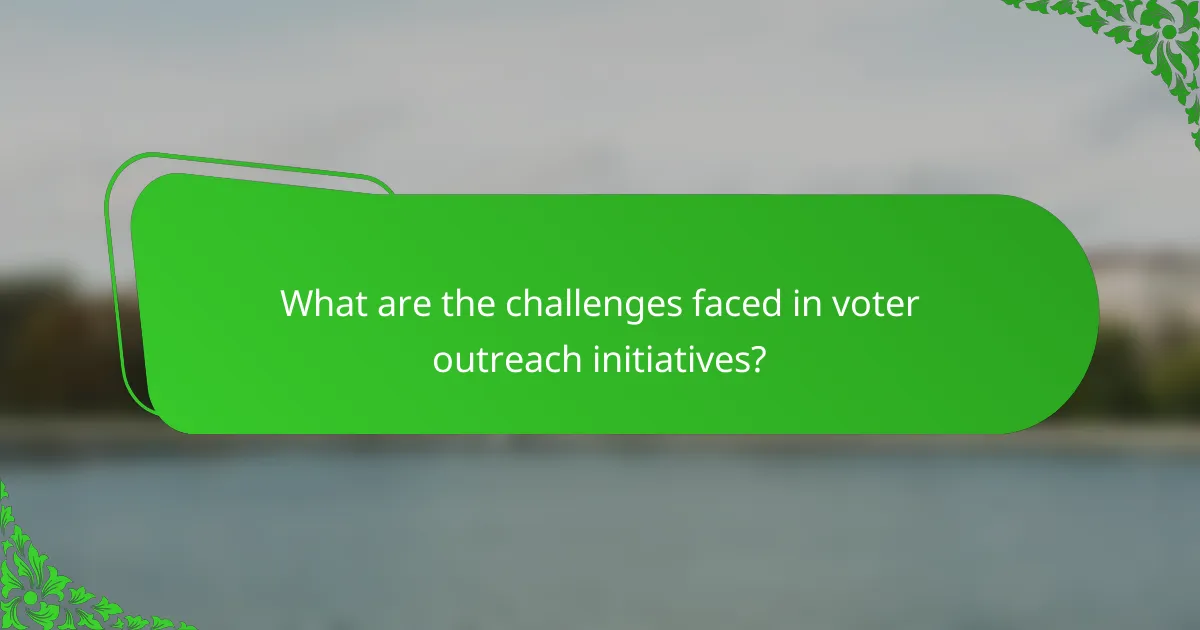
What are the challenges faced in voter outreach initiatives?
Voter outreach initiatives encounter several significant challenges that can hinder their effectiveness. Key obstacles include voter apathy, resource limitations, and miscommunication, each of which can diminish engagement and turnout.
Voter apathy
Voter apathy refers to the lack of interest or motivation among eligible voters to participate in elections. This disinterest can stem from feelings of disenfranchisement, skepticism about the electoral process, or a belief that their vote does not matter.
To combat voter apathy, outreach initiatives should focus on educating potential voters about the importance of their participation and the impact of their votes on local and national issues. Engaging storytelling and relatable messaging can help connect with apathetic voters.
Resource limitations
Resource limitations encompass financial constraints, staffing shortages, and insufficient access to technology, which can severely restrict outreach efforts. Many organizations rely on limited budgets and volunteer support, making it challenging to reach diverse populations effectively.
To maximize impact within these constraints, initiatives can prioritize high-impact strategies such as targeted social media campaigns or partnerships with local community organizations. Leveraging low-cost tools and platforms can also enhance outreach without straining resources.
Miscommunication
Miscommunication occurs when information about the voting process is unclear or misleading, which can lead to confusion and disengagement. This challenge often arises from complex regulations, jargon, or inconsistent messaging across different outreach channels.
To improve communication, outreach initiatives should use clear, straightforward language and provide consistent information across all platforms. Utilizing visuals, infographics, and FAQs can help clarify voting procedures and encourage participation.
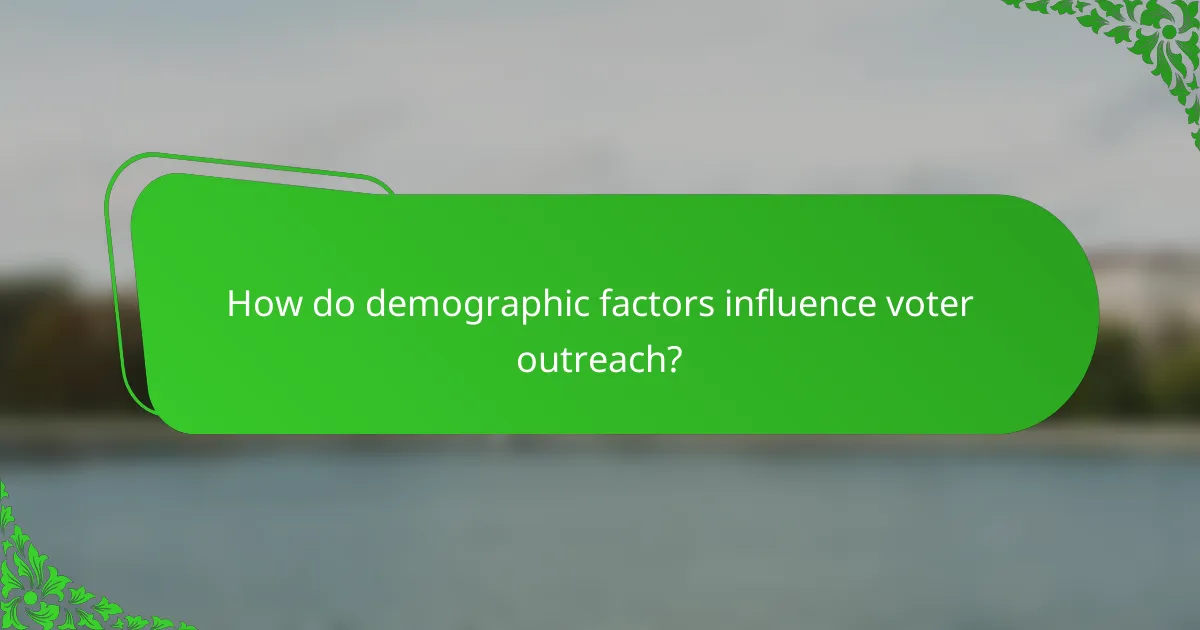
How do demographic factors influence voter outreach?
Demographic factors significantly impact voter outreach by shaping the preferences, behaviors, and communication styles of different groups. Understanding these factors helps organizations tailor their strategies to effectively engage diverse populations.
Age group preferences
Age plays a crucial role in determining how individuals respond to voter outreach efforts. Younger voters, typically those aged 18-29, often prefer digital communication channels such as social media and text messaging, while older voters may respond better to traditional methods like direct mail and phone calls.
To effectively reach various age groups, outreach initiatives should consider the preferred platforms and messaging styles of each demographic. For instance, using engaging visuals and interactive content can resonate well with younger audiences, whereas clear, straightforward information may appeal more to older voters.
Organizations should also be aware of the timing of their outreach efforts. Younger voters may be more responsive during evenings and weekends, while older voters might prefer weekday outreach during business hours. Tailoring outreach timing can enhance engagement rates across different age groups.
